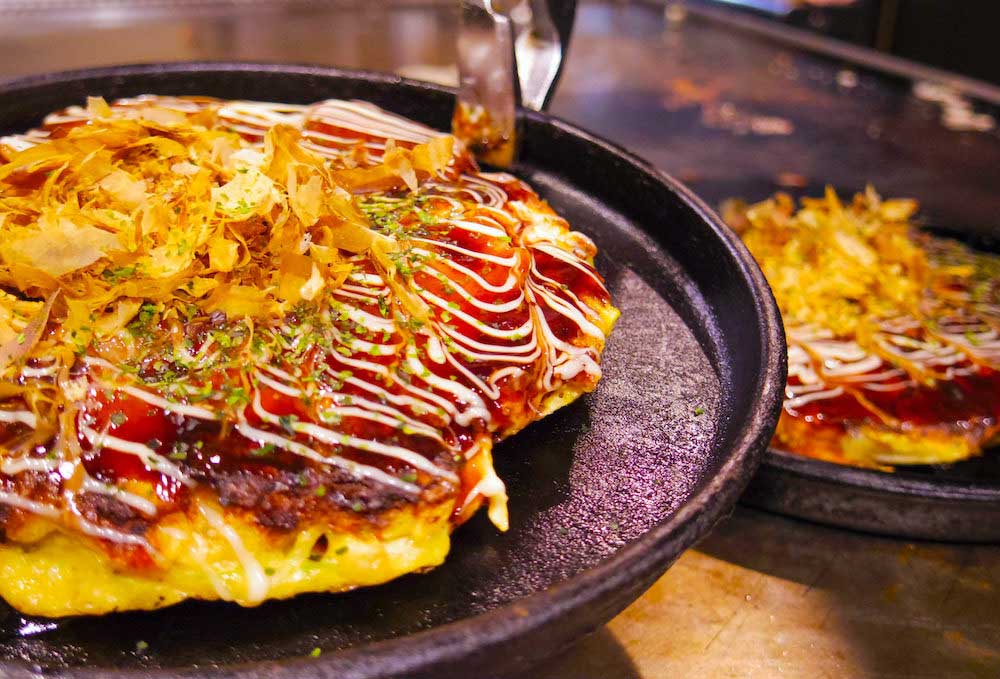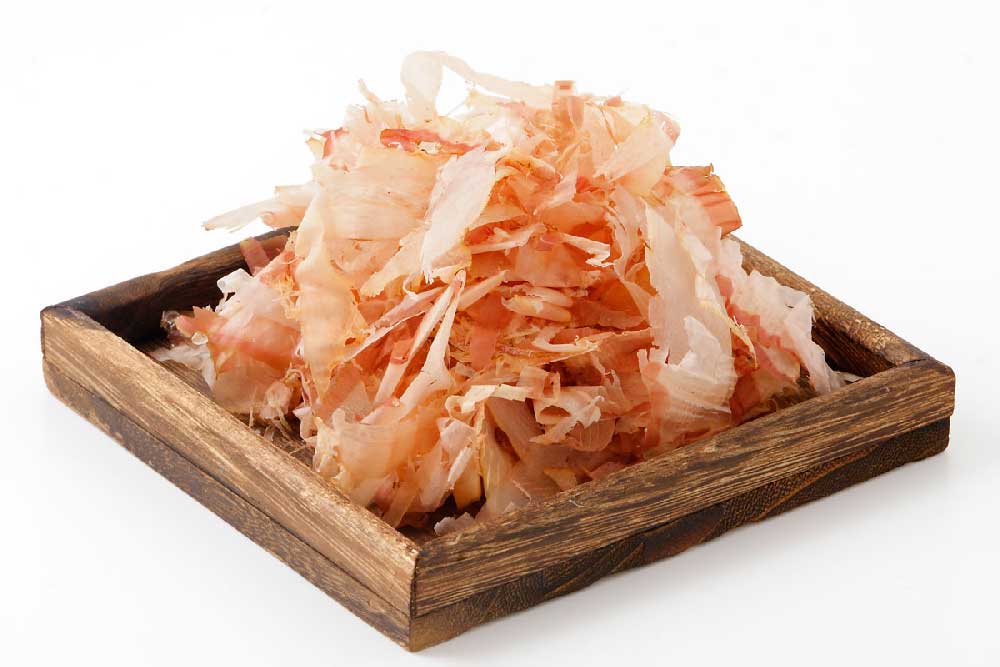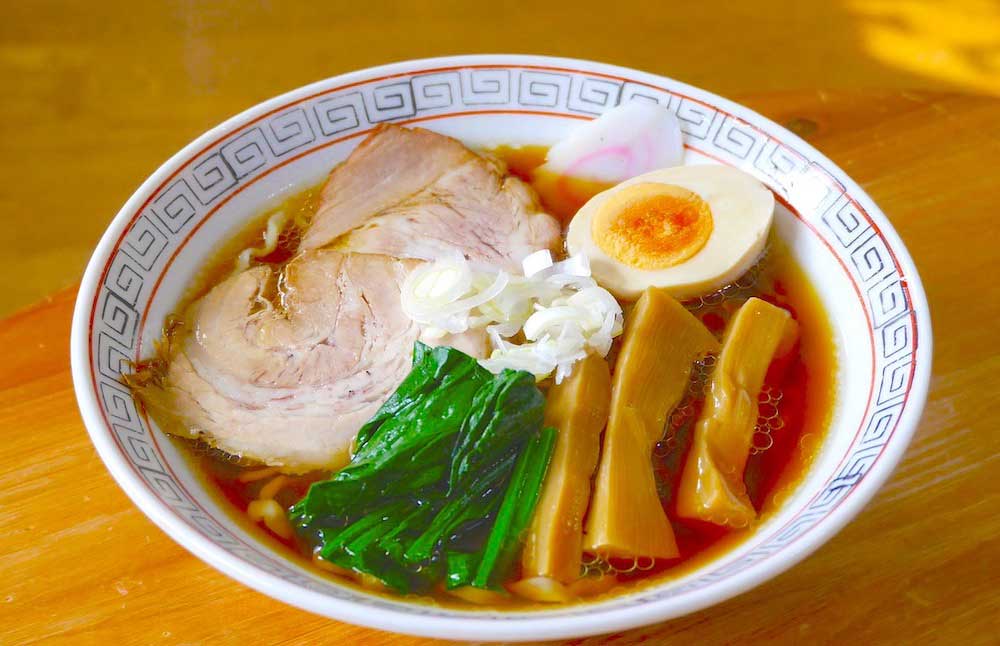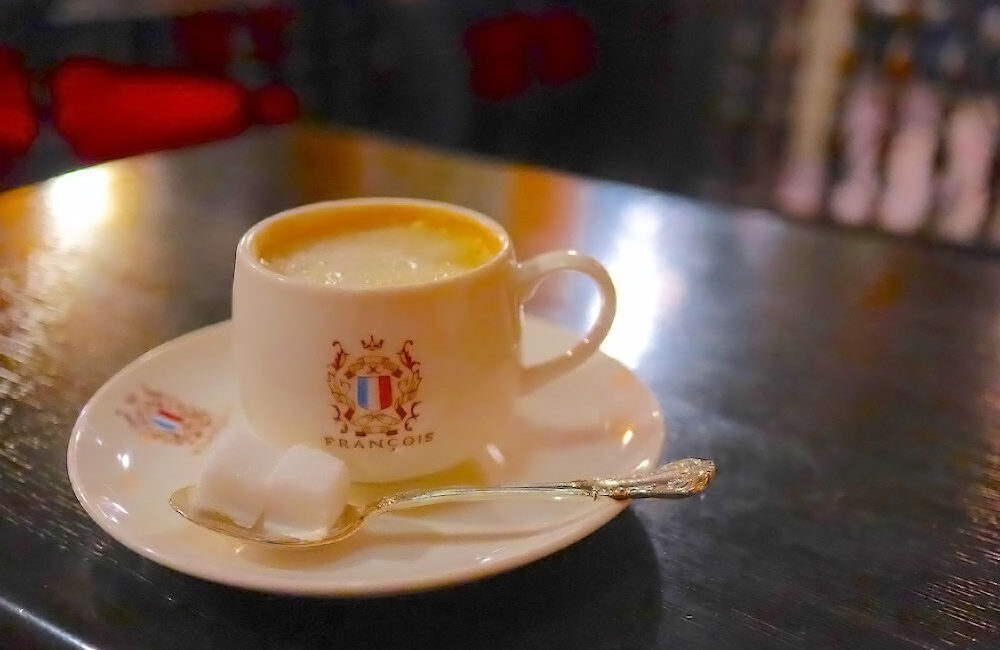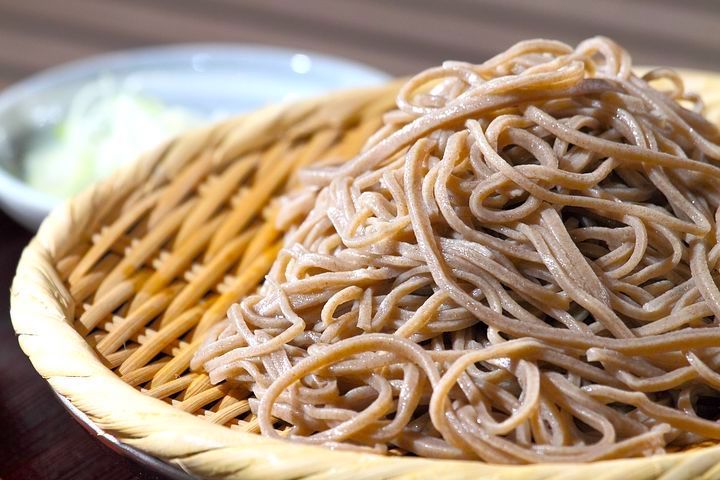
日本の伝統的な麺料理、「お蕎麦」と「うどん」。
海外からの観光客の間でも大変人気があり、日本食の「旨味」の真骨頂である「Dashi / 出汁」の味わいは、人々を魅了し続けています。
今回はそんな「お蕎麦」と「うどん」を英語で説明する表現をご紹介していきます。
ご興味のある方は、当サイトで 英語クイズ(5000問) を出題しておりますので是非ご覧ください。
目次
お蕎麦
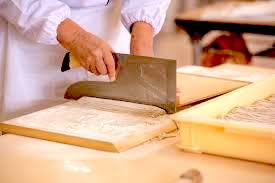
健康食としても知られるお蕎麦は、日常的にそして「年越し蕎麦」として一年の締めくくりに食される日本の国民食のひとつです。
使われているそば粉は決して日本独自のものではなく、古くから世界各国で親しまれてきました。
例えばフランスで食されているブルターニュ風ガレットにはそば粉が使われていますし、イタリアのロンバルディア州の「ヴァルテッリーナ地区」には、「ピッツォッケリ」というそば粉のパスタ料理があります。
異文化の人々にとって、外国の食べ物の名前は新鮮に聞こえますので、まずは「kitsune udon」や「zarusoba」のように日本名で伝えて、相手が分からないときは材料や作り方などを添えるのが良いでしょう。
お蕎麦の簡単な説明
Soba noodles are made from buckwheat flour and are prepared in various hot and cold dishes.
(お蕎麦はそば粉でつくられ、温かくまたは冷たくして供されます。)
Soba is a Japanese noodle dish consisting of buckwheat and served hot with soy-based broth or cold with dipping sauce (tsuyu).
(お蕎麦とは、そば粉でできた日本の麺料理で、温かいお醤油ベースのつゆをかけるか、または冷たくしてつゆにつけて食べます。)
Buckwheat comes from a plant that is relatively easy to grow, even when the soil is thin.
(そばは土地がやせていても比較的栽培しやすい植物です。)
Soba is basically eaten as “Zaru-soba,” which is made by boiling and cooling soba noodles and dipping them in a sauce (tsuyu) with Welsh onion, wasabi, and other condiments, or as “Kake-soba,” which is soba prepared in a hot soup.
(お蕎麦の基本的な食べ方としては、茹でたお蕎麦を冷たくして、ネギやわさび、その他の薬味とつゆにつけて食べる「ざる蕎麦」や、温かいかけ汁でいただく「かけ蕎麦」があります。)
Soba noodles are made by mixing buckwheat flour, wheat flour, yam (a Japanese mountain potato), and egg whites with water into a dough and then cutting it into thin, long pieces.
(お蕎麦は、そば粉、小麦粉、山芋、卵白を水でこねた生地を細長く切ってつくります。)
Once boiled, soba is served hot with a soy-based dashi broth or cold with a dipping sauce (tsuyu).
(一度茹でてから、お醤油ベースの温かいつゆをかけるか、または冷たくしてつゆとともに供されます。)
Soba is a brownish noodle soup made from buckwheat flour, and wheat flour and yam (a Japanese mountain potato) are also used as binding agents.
(お蕎麦とはそば粉からつくられる茶色がかった麺のことで、小麦粉や山芋がつなぎとしても使われます。)
Soba made from only buckwheat flour is called “Juwari-soba.”
(そば粉のみで作ったお蕎麦は「十割蕎麦」と呼ばれます。)
Soba noodles made from 100% buckwheat flour are called “Juwari-soba.”
(そば粉100%のお蕎麦は「十割蕎麦」と呼ばれます。)
“Juwari” means “pure” or “unadulterated.”
(「十割」とは、純粋 または 不純物のない、という意味です。)
Soba noodle soup is made from the same components as the dipping sauce for the chilled soba.
(お蕎麦のつゆは、冷たいお蕎麦のつゆと同じ素材でつくります。)
“Tsuyu” is a Japanese soup base used in noodle dishes and is made from boiling kombu (kelp) and katsuobushi (bonito flakes).
(「つゆ」とは、日本の麺料理の基本となるスープのことで、昆布や鰹節を煮出してつくります。)
Soba tsuyu is prepared with soy sauce, sake, kombu (kelp), katsuobushi (dried bonito flakes), and so on.
(そばつゆはお醤油、お酒、鰹節、昆布などでつくります。)
Soba noodles are very popular and easily available in Japan.
(お蕎麦は大変人気なので、日本の至るところで食べられます。→ available「利用可能である」)
In soba restaurants, Zaru-soba and Mori-soba come with soba-yu (hot buckwheat water).
(お蕎麦の専門店では、ざる蕎麦やもり蕎麦に「そば湯」がつきます。)
You can drink the mixture of dipping sauce (tsuyu) and soba-yu after eating the noodles.
(お蕎麦を食べたあとに、そばつゆとそば湯を合わせて飲むことができます。)
冷たいお蕎麦
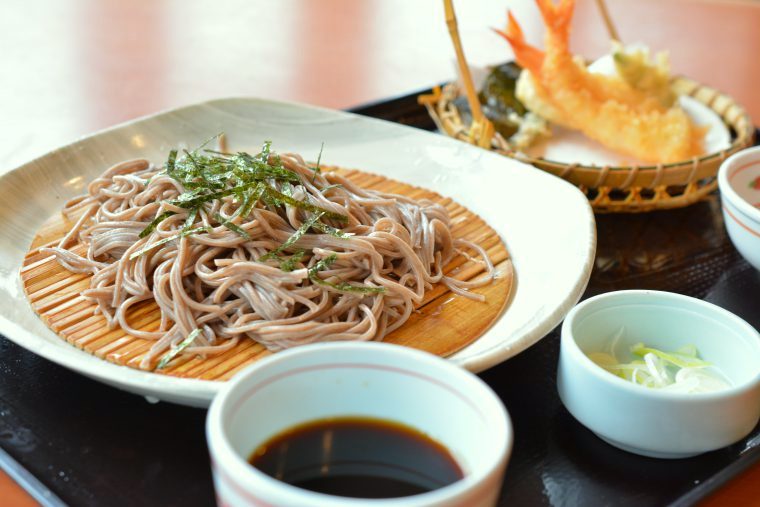
もりそば / Mori-soba
Chilled soba noodles are served on a flat basket with dipping sauce (tsuyu) on the side.
(平たいかごにのせて供される冷たいお蕎麦で、浸けつゆが添えられています)
Mori-soba is the most basic kind of cold soba served on a flat basket or plate.
(冷たいお蕎麦の最も基本的なもので、平たいかごやお皿で出されます。)
Mori-soba is plain, cold soba noodles served with a dipping sauce (tsuyu).
(もりそばは、そのままの冷たいお蕎麦と浸けつゆで供されます。)
ざるそば / Zaru-soba
Cold soba noodles topped with shredded dried seaweed served on a bamboo draining basket with dipping sauce
(竹製のざるにのせて供され、きざみ海苔がかかかっていてつゆが添えられている冷たいお蕎麦)
Cold buckwheat noodles with shredded dried seaweed are usually called zaru-soba.
(きざみ海苔がのっている冷たいお蕎麦は「ざるそば」と呼ばれています。)
Zaru-Soba are cold buckwheat noodles on a latticed bamboo tray with shredded dried seaweed.
(ざるそばとは、冷たいお蕎麦を格子状の竹製のトレイにのせ、きざみ海苔をかけたものです。)
Zaru-Soba are cold soba noodles that are served on a latticed bamboo tray with shredded dried seaweed.
(ざるそばとは、格子状の竹製のトレイにのせて供される冷たいお蕎麦で、きざみ海苔をかけたものです。)
Zaru-Soba is a chilled noodle dish made from buckwheat flour and served on a latticed bamboo tray with chilled dipping sauce (tsuyu) on the side.
(ざるそばとは、そば粉から作られる冷たい麺料理で、格子状の竹製のトレイにのせて冷たいつゆが添えられます。)
温かいお蕎麦
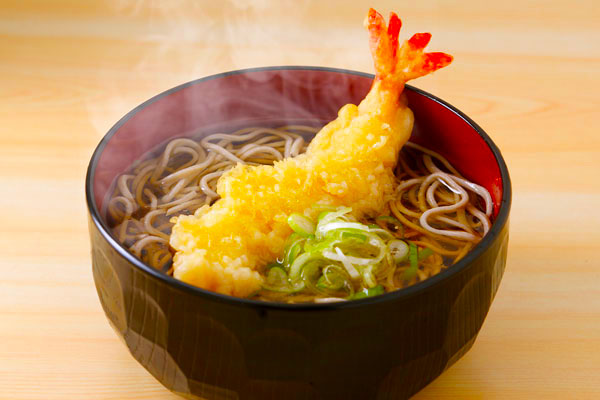
かけそば / Kake-soba
かけそばの簡単な言い方は以下の通りです。
- soba in hot broth
- buckwheat noodle broth/soup
- soba noodles in soy-based dashi broth
buckwheat noodles served in a bowl of hot, soy-based dashi broth
(温かい丼にお醤油ベースのだし汁を入れたお蕎麦)
hot soba noodles served in a soup with a rich dashi broth flavored with kelp, dried bonito flakes and soy sauce
(昆布、鰹節、お醤油の風味豊かなだし汁のつゆで供される温かいお蕎麦)
buckwheat noodle dish served in a hot broth made from boiling kombu (kelp) and katsuobushi (bonito flakes)
(昆布と鰹節を煮出して作った温かい出汁のつゆで供される蕎麦料理)
きつねそば / Kitsune-soba
- soba noodle soup topped with pieces of fried bean curd
(厚揚げをのせたお蕎麦)
fried bean curd は厚揚げのことで、deep-fried soybean curd でもOKです。
たぬきそば / Tanuki-soba
天かすは、”bits of deep-fried tempura batter” や “fried tempura batter crusts” などで表現できます。
- soba noodles topped with bits of deep-fried tempura batter
- soba noodle soup topped with fried tempura batter crusts
上記のどちらも、「天かすをのせたお蕎麦」です。
天ぷらそば / Tempura soba
buckwheat noodle soup topped with tempura
(天ぷらをのせたお蕎麦)
月見そば / Tsukimi-soba
hot soba noodles in soup topped with a raw egg
(生卵をのせた温かいお蕎麦)
The name “tsukimi” comes from its appearance of a raw egg dropped in hot soba noodle soup looking like the full moon.
(温かいお蕎麦の上に落とした生卵が満月に似ていることからこの名前がつきました。)
鴨南蛮そば / Kamo-nanban soba
soba noodles with duck meat and leeks
(鴨肉とネギのお蕎麦)
Kamo-nanban soba is a warm noodle dish in dashi broth with duck meat and green onions.
(鴨南蛮そばとは、出汁スープに鴨肉とネギを加えた温かいお蕎麦です。)
年越しそば / Toshikoshi-soba
- New Year’s Eve noodles
Toshikoshi-soba is eaten at the end of the year.
(年越しそばは大晦日に食べます。)
Traditionally, Japanese people eat buckwheat needles on New Year’s Eve.
(伝統的に、日本人は大晦日にお蕎麦を食べます。)
Soba symbolizes a long life because it is long in shape.
(お蕎麦は、その長い姿から「長寿」の象徴とされています。)
うどん / Udon
小麦粉、お水、お塩でできたうどんは、太くてもっちりとした食感が特徴です。
おつゆや具材はお蕎麦とほとんど変わりませんが、カレーうどんや鍋焼きうどん、味噌煮込みうどんなど、「煮込む」タイプのものはうどんならではと言えるでしょう。
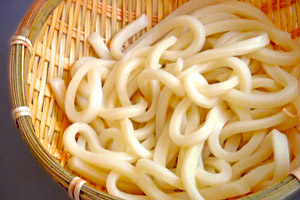
うどんの簡単な説明
Japanese thick wheat noodles
(日本の太い小麦粉でできた麺)
Udon is a white noodle made from wheat flour that is thick and soft.
(うどんは小麦粉からつくられる白い麺で、太くてやわらかい食感です。)
Udon is made by thinly rolling out wheat flour and water and then cutting the dough in fine strips.
(うどんは小麦粉とお水をこねて薄くのばした生地を細く切ったものです。)
Udon is a Japanese noodle dish made from wheat flour.
(うどんとは、小麦粉から作られる日本の麺料理です。)
The cooking method and ingredients for udon are basically the same as for soba.
(うどんの調理工程や具材などは基本的にはお蕎麦と同じです。)
Udon is typically served in hot broth and eaten with Welsh onion and other garnishes.
(茹でたうどんに温かいつゆをかけ、ネギなどの薬味を添えるのが基本的な食べ方です。)
Udon noodles are cooked in a tasty broth made from dried bonito flakes and kelp.
(うどんは、鰹節や昆布でとった美味しいだし汁で作ります。)
うどんの種類
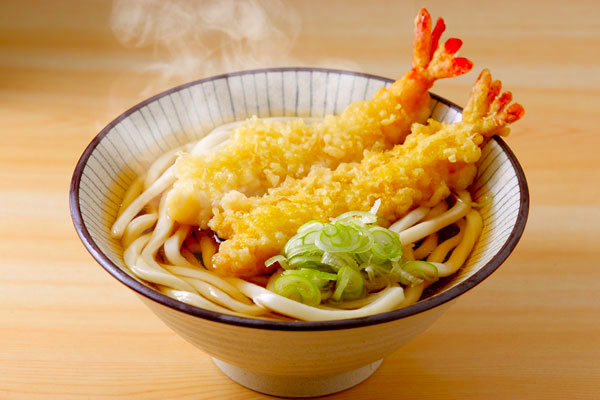
かけうどん / Kake-udon
- hot udon noodle soup
- udon in hot dashi broth
udon in a clear broth made from bonito flakes and kelp stock
(鰹節と昆布でとった透明な出汁のうどん)
きつねうどん / Kitsune-udon
udon topped with fried tofu (bean curd)
(厚揚げをのせたうどん)
fried bean curd は厚揚げのことで、deep-fried soybean curd でもOKです。
たぬきうどん / Tanuki-udon
お蕎麦の項目でもご紹介しましたが、こちらは「天かすをのせたうどん」です。
- udon topped with bits of deep-fried tempura batter
- udon noodle soup topped with fried tempura batter crusts
天かすは、bits of deep-fried tempura batter や、fried tempura batter crusts などで表現できます。
月見うどん / Tsukimi-udon
hot udon noodles in soup topped with a raw egg
(生卵をのせた温かいお蕎麦)
カレーうどん / Curry udon
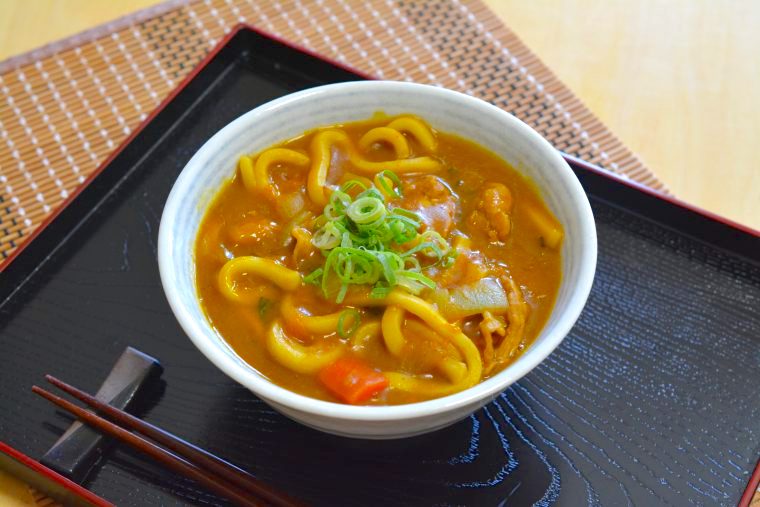
udon (Japanese chewy noodles) served in a spicy curry-flavored broth
(スパイシーなカレー風味のスープに入ったコシのある麺)
a spicy noodle dish made with Japanese thick wheat noodles served in a thick, glossy curry-flavored dashi soup
(とろりとしたつやのあるカレーのスープに入れたうどん)
鍋焼きうどん / Nabeyaki-udon
- udon noodle pot
- Japanese hot pot-style udon dish
udon noodle pot with tempura, an egg and vegetables
(天ぷら、卵、お野菜などをのせた温かい鍋うどん)
hot udon noodle soup served in an earthen pot called “donabe.”
(「土鍋」と呼ばれる素焼きのお鍋で食べる温かいうどん料理)
「鍋料理」と明確にしたい場合は、「pot dish」、「one-pot dish」、「hot pot dish」などと表現します。
